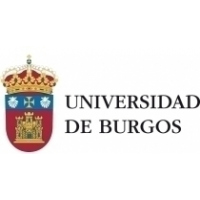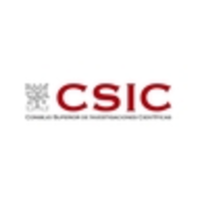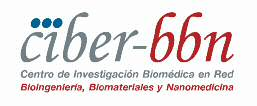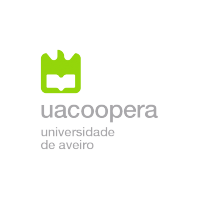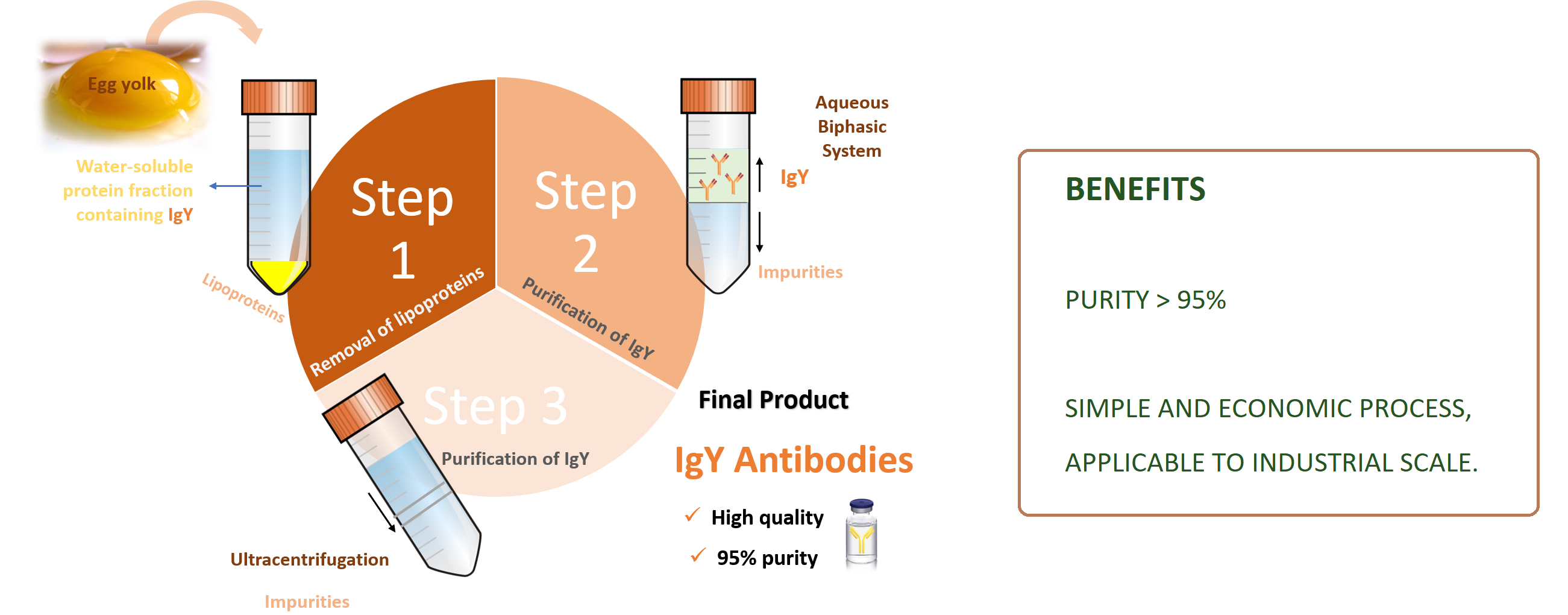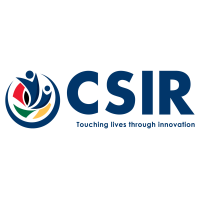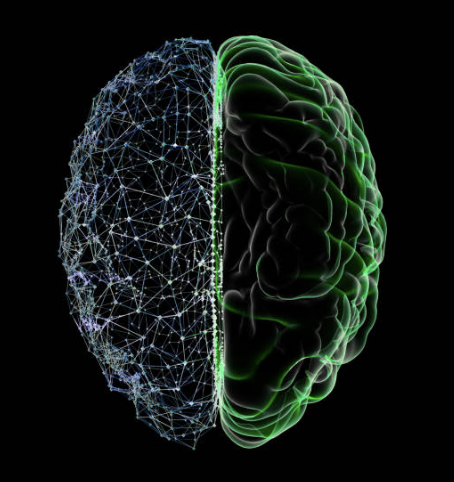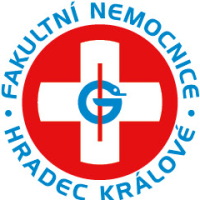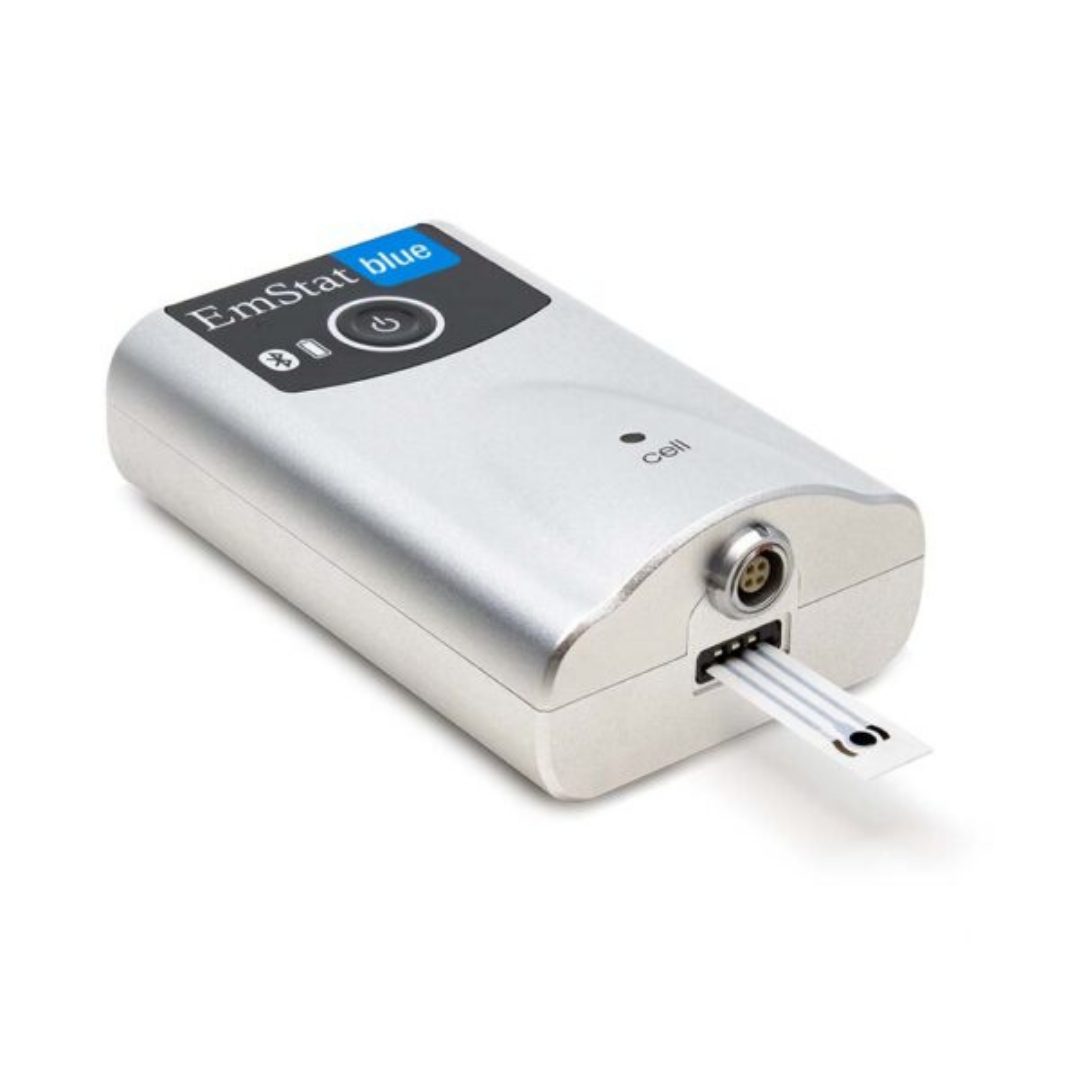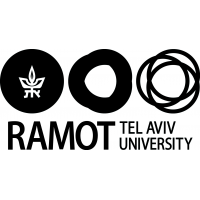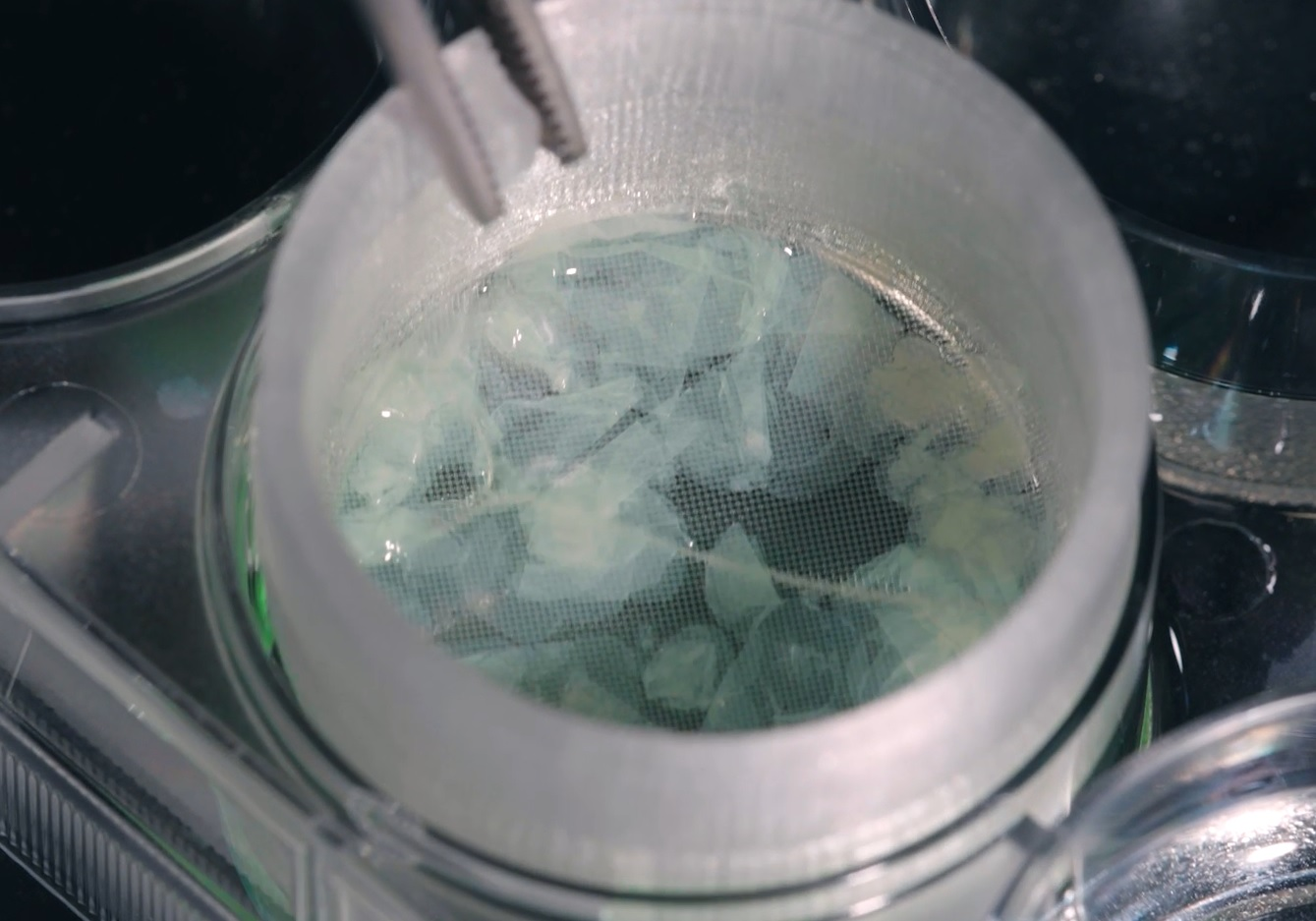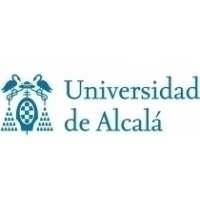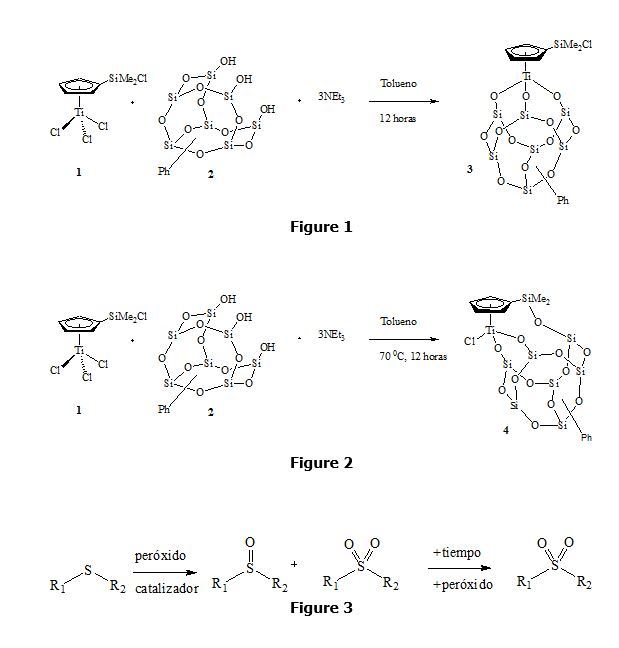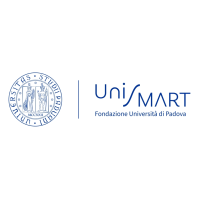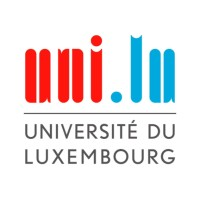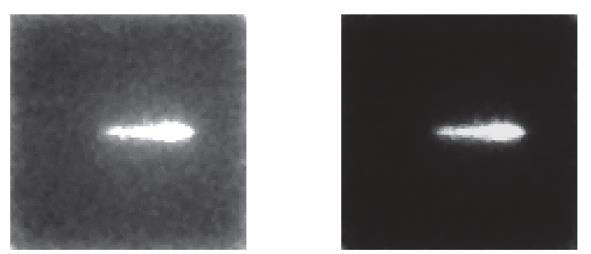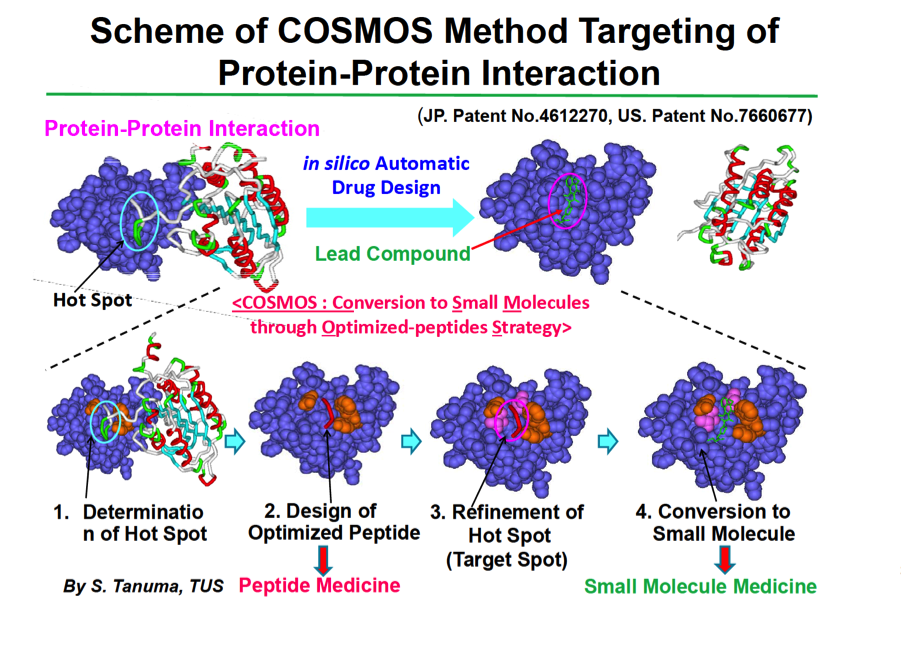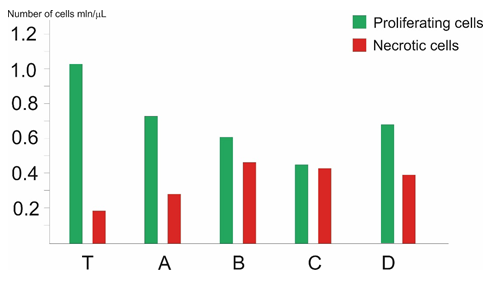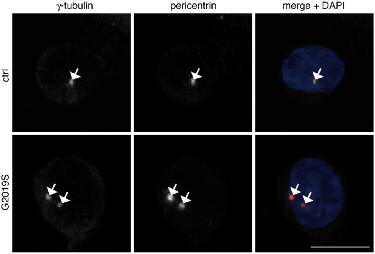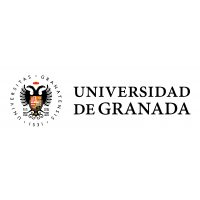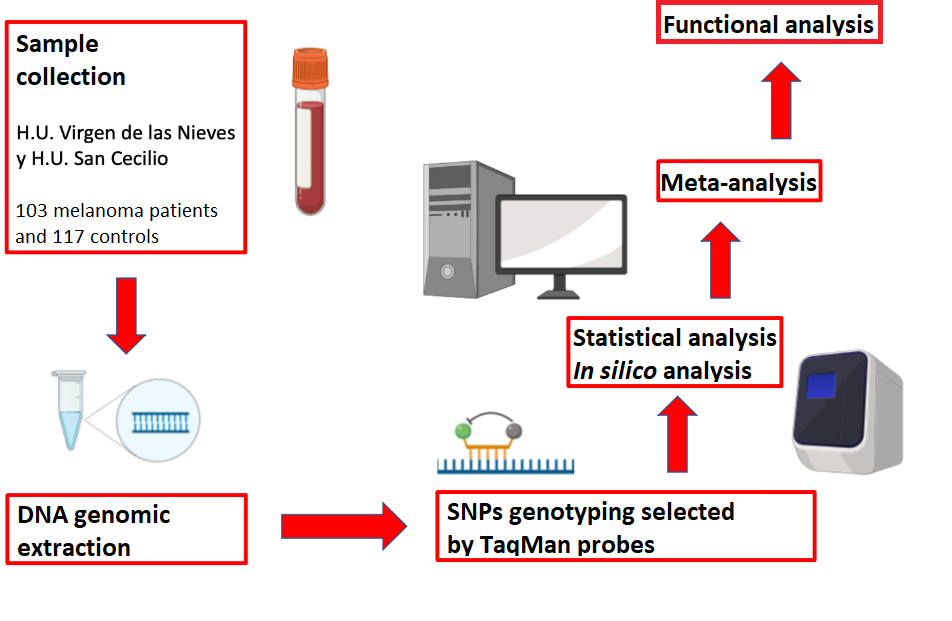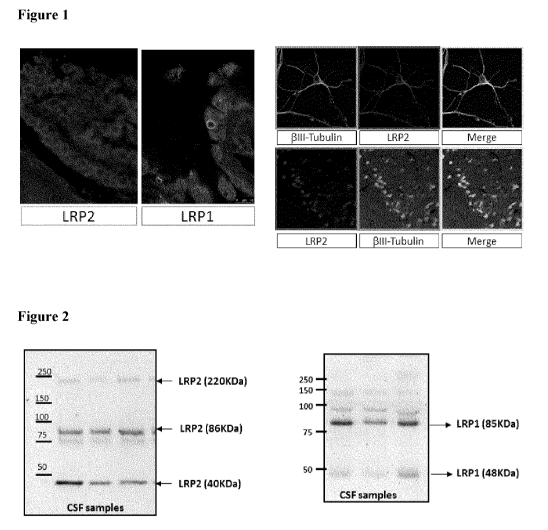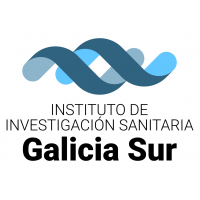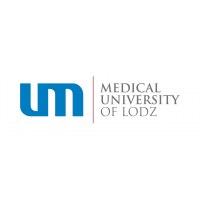Technology Offers Site map description
I
Yeda posted this:
Imaging Platform for IBD Drug DiscoveryInflammatory bowel disease (IBD) is characterized by chronic inflammation of the gastrointestinal (GI) tract, resulting in its damage and gut barrier dysfunction. These chronic conditions are treatable but not curable, dramatically decrease the patient’s quality of life and affect approximately 1.6 million Americans. The teams of Profs. Geiger and Elinav designed a high-throughput screening platform for molecules that affect the intestinal epithelial barrier and identified specific molecules that can be used as potential drugs to treat IBD.UNIVERSIDAD DE BURGOS posted this:
Immobilization of glucose-oxidase for oenological application to obtain wines with low alcohol contentResearchers at the University of Burgos have developed a technology of immobilization of glucose-oxidase that reduces the amount of glucose available in the must for reducing the alcohol content in wine.UNIVERSIDAD DE BURGOS posted this:
Immobilization of glucose-oxidase for oenological application to obtain wines with low alcohol contentResearchers at the University of Burgos have developed a technology of immobilization of glucose-oxidase that reduces the amount of glucose available in the must for reducing the alcohol content in wine.CSIC - Consejo Superior de Investigaciones Científicas posted this:
Immunoassay for detection of Pseudomonas aeruginosa Quorum Sensing moleculesCSIC has developed an immunochemical method for diagnosis of infections produced by Pseudomonas aeruginosa targeting the main signaling molecules of the pqs Quorum Sensing system. The immunoassay is fast and efficient, with low LOD and adaptable to point-of care devices. Industrial partners from the pharmaceutical or diagnostics industry are being sought to collaborate through a patent licence agreement.CSIC - Consejo Superior de Investigaciones Científicas posted this:
Immunoassay for rapid diagnosis of infectious diseases caused by Pseudomonas aeruginosa CSIC, CIBER-BBN and UAB have developed an immunochemical method for diagnosis of infections produced by Pseudomonas aeruginosa. The immunoassay is fast and efficient, with low LOD and adaptable to point-of care devices.UACOOPERA University of Aveiro posted this:
Immunoglobulin Y Purification, Its Products And UsesThis invention describes a purification process of immunoglobulin Y from egg yolk in three stages, by applying precipitation methods, liquid-liquid extraction and ultracentrifugation. The present process allows to obtain immunoglobulin Y of high quality and with a purity >95%, in a simple and economic way, and applicable at an industrial scale.
Technology Transfer Office at uacooperaUniversity Hospital Hradec Králové posted this:
Immunosensor for Detection of Inflammation in Amniotic FluidA point-of-care test based on electrochemical immunosensor for simultaneous determination of three significant inflammatory markers. Preterm Premature Rupture of Membranes (PPROM) is a pregnancy complication. In this condition, the sac (amniotic membrane) surrounding the fetus breaks (ruptures) before week 37 of pregnancy. Once the sac breaks, pregnant woman has increased risk for infection. PPROM complicates 3 – 4% of all pregnancies and is up to 1/3 complicated by microbial invasion of the amniotic cavity (MIAC) leading to infection in amniotic fluid (AF) and development of intra-amniotic inflammation. Although this complication is usually asymptomatic, it is a major cause of preterm birth and neonatal morbidity and mortality worldwide. Neonates from these pregnancies are at increased risk of developing neonatal sepsis and impaired psychomotor development and other sometimes lifelong health consequences. Our invention is point-of-care test (POCT) based on electrochemical immunosensor for simultaneous detection of three inflammatory protein biomarkers with high predictive value in AF collected by amniocentesis. The aim of the test is to confirm intra amniotic inflammation. The entire biosensor consists of an immunosorbent magnetically active microparticles modifed with specific antibody. After capturing the protein biomarker by the immunosorbent, the bioconjugate (IgG antibody conjugated with an electroactive indicator, specifically quantum dots or gold nanoparticles) is added. A final measurable signal proportional to the concentration of the inflammatory protein biomarker is provided by metal ions released from the electroactive indicator. Disposable screen printed three electrode sensors are used for simultaneous electrochemical analysis. Clinical relevance of selected protein biomarkers was determined based on the results of proteomic and antibody studies of AF of pregnant women with PPROM. Advantages POCT enables to speed up the process of confirmation or elimination inflammation in AF and can be easily performed and evaluated in minutes beside the patient´s bed and thus enables personalised approach to therapeutic intervention of the pregnant woman. Currently, determining the MIAC is not specific enough and is very time consuming and technically demanding. It is based on combination of cultivation and molecular methods. Further research is focused on test verification in cervicovaginal fluid to avoid amniocentesis.RAMOT at Tel Aviv University Ltd. posted this:
Immunotherapy for Stroke and Cognition in a Cerebral Amyloid Angiopathy Animal ModelCerebral amyloid angiopathy (CAA) is due to amyloid accumulation in the vessel walls leading to hemorrhagic stroke, and cognitive impairment. There are no available treatments to specifically reduce the risk of CAA. In this research we aim to assess brain tissue damage and cognitive impairment resulting from CAA in animal model and to investigate a novel approach to immune therapy. Methods: We have shown that nasal vaccination with a proteosome adjuvant (Protollin) that is well tolerated in humans, decreases amyloid plaques in an Alzheimer’s disease mouse model. It was recently reported that an overexpression of TGF-?1 under the control of an astrocyte promoter GFAP in mice results in CAA. TGF-?1 mice were nasally treated with Protollin on a weekly basis starting at the age of 13 months for three months. Following treatment animals were subjected for MRI and cognition analysis. Results: Here we show that nasal Protollin activates perivascular macrophage and potently decreases vascular amyloid in TGF-?1 mice. Using MRI we found that while PBS treated animals showed a significant enlargement of the lateral ventricles area, Protollin prevents further brain damage and prevents pathological changes in the blood-brain barrier. Vascular risk factors have been found to be associated with vascular dementia. Using an object recognition test and Y-maze, we found significant improvement in cognition with the Protollin treated group. Interpretation :Our study demonstrates that activation of macrophages by Protollin is a novel approach to reduce microhemorrhage, prevent stroke and improve cognition in a model of cerebral amyloid angiopathy. Project ID : 10-2011-259CSIC - Consejo Superior de Investigaciones Científicas posted this:
Improved bucket to protect biological tissues in immunohistochemical analysisImproved bucket to protect biological tissues in immunohistochemical analysis CSIC and the Miguel Hernández University have developed a bucket to be used in multiple in vitro analysis of biological tissues that fixes the samples for a safe transport between plate wells. Its improved structure facilitates an efficient use of the reactants, a maximized use of the grid surface, and the replacement of the grids in order to fit the requirements of the analysis. Industrial partners from the laboratory equipment industry are being sought to collaborate through a patent licence agreement for the commercialization of the device. An offer for Patent LicensingUniversidad de Alcalá-OTRI posted this:
Improved procedure to obtain active principles in Aloe leavesA technology based firm, set up by researchers of Alcalá University, has developed a procedure to obtain active principles from Aloe leaves. With this procedure, a product with pharmacological, cosmetic and nutritional use is obtained. The resultant product could have therapeutic and/or food properties. Toxic compounds as phenols are removed. The researchers are interested in join venture and/or manufacture agreements.Universidad de Alcalá-OTRI posted this:
Improved process for selective oxidation of sulfide groups to sulfone by silsesquioxane catalysts.A Spanish-Portuguese research group from the department of Inorganic Chemistry at Alcalá University and ITQB-Universidad Nova of Lisboa of Oeiras, has developed a process of synthesis of titanium silesquioxane compounds and its applications in oxidation catalyst of organic sulphur compounds. The group looks for licencing agreements and commercial or collaboration agreements with pharmaceutical and petrochemical industry, and those industries in charge of the fertilizer preparation and production of compounds for the treatment of environmental problems.Unismart - University of Padua Foundation posted this:
Improved solar panel recyclingThis patent improves the current methods available to separate the glass from the photovoltaic cells. This patent has developed a simple and effective method to improve the separation of the glass from the cells. Thanks to the accurate separation of each material, their value as a reusable raw material is greatly increased.Yeda posted this:
Improved Treatment for GlaucomaGlaucoma is one of the leading causes of irreversible blindness worldwide, affecting over 60 million people. It is usually caused due to raised intraocular pressure (IOP). Although several drug classes which lower IOP are available, they all cause local and systemic side effects, and improved treatments are greatly needed. The group of Prof. Steve Karlish developed new drugs derived from Digoxin, which selectively inhibit Na-K-ATPase, an ion pump that produces the eye fluids. These compounds effectively reduce ocular hypertension in various glaucoma animal models, and as such, offer a potential new therapeutic class for IOP-lowering medications.Tech Line Coatings, Inc posted this:
Improvement in Anodizing Type II and Type IIIA new and non hazardous additive that improves the wear resistance and corrosion resistance of anodized components. Reduces the pore structure and allows a thinner anodic layer while producing with superior characteristics. An example of corrosion improvement is in 2024 aluminum where a .001" thick layer passed 336 hour salt spray with no problem and a .006" layer with no seal coat exceeded 200 hours in Type II anodizing. Parts in salt spray won 6061 have been in salt spray since Dec 2009 with no corrosion and wear in type 2 is equal or superior to Hard CoatUniversity of Luxembourg posted this:
Improvement of power quality in electrical smart gridsThe invention provides an algorithm to optimize the quality grid by compensating the effect of disturbances in terms of voltage harmonics and distortion power. The technology is based on the use of inverter-fed power devices with modern high-speed micro-controllers and an intelligent management of the different powers to be generated. The compensation can be implemented on a self-sufficient single voltage generating power source running in stand-alone or grid-tied. It can also be shared and distributed on multiple voltage source inverters (VSI) of different powers connected on a utility grid.CSIC - Consejo Superior de Investigaciones Científicas posted this:
Improvement of the signal / noise ratio in detectors used in hadronic therapyCSIC and the University of Valencia have developed a device that makes it possible to effectively determine the place where radiation is deposited in hadronic therapy, a decisive aspect of the clinical application of this technique against tumors. Unlike conventional radiation therapy, hadronic therapy uses heavy charged particles to irradiate the tumor. Since heavy particles destroy the tumor more effectively than photons, and it is possible to deposit a lower dose in healthy tissue. In order to use hadronic therapy, it is essential to determine in real time whether the radiation dose is being used at the intended site, and by means of this invention it is possible to monitor the radiation dose of hadronic therapy. Industrial partners whose field of application is the development of medical devices used in hadronic therapy are being sought to collaborate through a patent licence agreement. An offer for Patent LicensingUniversidad de Alcalá-OTRI posted this:
Improvement of the working environment and the increase of productivity: diagnosis and solutions to improve the conciliation of work and family life for employees.A research group from the Department of Applied Economics at the University of Alcalá offers a consulting service for diagnosis and solutions to improve the work and family life conciliation for employees. The group is open to reach commercial agreements with companies that want to improve the working environment within their organization for better efficiency and profit maximization. Aware that conciliation is a matter of all, there is a need for men and women to share responsibility of their personal and professional duties. But of course, it is also fundamental a social consciousness aware of the relationship between conciliation and efficiency and better business performance, so that the investment in conciliation policies presume an improvement of business efficiency and loyalty of employees in the companies that follow these practices Maria João CardosoInstituto de TelecomunicaçõesMaria João Cardoso
Maria João CardosoInstituto de TelecomunicaçõesMaria João CardosoIntellectual Property and Technology Manager at Instituto de Telecomunicações
View ProfileMaria João Cardoso posted this:
Improving outdoor positioning in mobile devices using anomalies in the Earth magnetic fieldOutdoor localisation system based on magnetic landmarks – magnetic anomalies that distort the expected geomagnetic field due to strong local magnetic fields, oftentimes originated by fixed man-made structures. This technology proposes to leverage those landmarks as signatures for localisation purposes.
Intellectual Property and Technology Manager at Instituto de TelecomunicaçõesRadoslaw Rudz posted this:
Improving stem cell culture using carnivorous plantsMesenchymal Stem Cells (MSCs) are multipotent precursor cells with the unique capacity to self-renew, proliferation and transformation into specialized cells present in many body tissues, such as muscle, adipose tissue, fibroblasts, cartilage, tendons, and nervous tissue. They are also characterized by the ability to affect the immune system by secretion of compounds that support the immune response directed among others against bacteria and parasites. They have properties enabling the secretion of chemical compounds that stimulate the formation of new blood vessels. All these attributes make them applicable in regenerative medicine, transplantology and in the treatment of many diseases. The umbilical cord blood and Wharton’s jelly MSCs are the sources from which MSCs are obtained. Due to the small amount of MSCs in the starting material, it is necessary to lead in vitro cultures to obtain sufficient numbers of cells that can be administered to the patient. Methods of isolation and culture of mesenchymal stem cells, including the growth medium, play a crucial role in obtaining the appropriate biological material that guarantees therapeutic success. Therefore, continuous improvement of procedures for isolating and in vitro culturing of MSCs is extremely important. The subject of the offer is a method of culturing mesenchymal stem cells using secretions from carnivorous plants, which increase cell adherence and proliferation, counteract their transformation into specialized cells, therefore, they longer maintain their pluripotency.
Other at Jagiellonian UniversityMitsu Yamamoto posted this:
In silico platform for targeting protein-protein interaction, pharmacogenomics “COSMOS”The COSMOS method developed by the research team at the Tokyo University of Science (TUS) offers a platform for “personalized drug discovery” based on a novel drug discovery methodology. The concept is to identify an optimal binding peptide that interacts with the active/regulatory site (Hot Spot) of the target drug discovery protein by using in silico methods.
Business Development Manager at Japan Technology Group, Inc.Radoslaw Rudz posted this:
In vitro culture medium for cells, tissues, and organs of amphibiansThe subject of the offer is a specialized medium for the in vitro culture of cells, tissues, and organs of amphibians. Thanks to the unique composition of active substances and refined their concentrations to the requirements of amphibian cells, the use of medium enables long-term culture as well as a high level of cell proliferation and reduction of cell mortality.
Other at Jagiellonian UniversityCSIC - Consejo Superior de Investigaciones Científicas posted this:
In vitro method for designing a customized therapy for a subject with Parkinson´sDisease CSIC, Université de Lille, INSERM and Centre Hospitalier Regional Universitaire de Lille have developed an in vitro method for designing a customized therapy for a Parkinson ‘s Disease patient through the determination of the presence of a centrosomal deficit from that subject and therefore susceptible to receive a therapy based on a LRRK2 inhibitor. LRRK2 is a key player for the development of both genetic and sporadic forms of Parkinson’s Disease (PD). Industrial partners from pharmaceutical industry are being sought to collaborate through a patent licence agreement.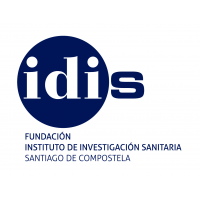 Fundación Instituto de Investigación Sanitaria de Santiago de Compostela (FIDIS)Fundación Instituto de Investigación Sanitaria de Santiago de Compostela (FIDIS)Fundación Instituto de Investigación Sanitaria de Santiago de Compostela (FIDIS)
Fundación Instituto de Investigación Sanitaria de Santiago de Compostela (FIDIS)Fundación Instituto de Investigación Sanitaria de Santiago de Compostela (FIDIS)Fundación Instituto de Investigación Sanitaria de Santiago de Compostela (FIDIS)Technology Transfer Office
View ProfileFundación Instituto de Investigación Sanitaria de Santiago de Compostela (FIDIS) posted this:
In vitro method for detecting tumor growth and diagnosing or prognosticating the risk of metastasis in a human subject that has been diagnosed with uveal melanomaProblem to solve: Uveal ocular melanoma is the most common primary ocular malignancy in adults, with an incidence of approximately 7 cases per million inhabitants per year. Its incidence is therefore not very high, but it is a disease for which there are has been no alternative for more than 50 years. In addition, the American Cancer Society has published an increase in the incidence, having been diagnosed only in the United States 2,730 new cases in 2014. By the year 2018 there are anticipated 3,540 new cases in the USA. According to www.cancer.gov, the database of the National Cancer Institute of the USA, the age-adjusted average incidence of uveal melanoma in the United States is about 4.3 new cases per million inhabitants, without a clear variation related to latitude. Men have a higher incidence than women (4.9 vs. 3.7 per million). The age-adjusted incidence of this cancer has remained stable since at least the first years of the 1970s. Incidence rates in the United States are low compared with the rates of other reporting countries, which range from 5.3 to 10.9 cases per million. Part of the variation may be the result of differences in the inclusion criteria and calculation methods. Innovation: The present invention provides an in vitro method for detecting tumor growth and diagnosing or prognosticating the risk of metastasis in a human subject that has been diagnosed with uveal melanoma, wherein the biological sample is treated with a lysis agent capable of disrupting the membrane of the exosomes prior to determining the expression of the melanocyte protein PMEL/ME20-S/gp 100. This method incorporates new techniques that differentiate it from the potential competitors in several aspects. Our method is non-invasive (as it does not require a tumor biopsy), it does not require specific training and sampling is included in the hospital routine (blood extraction). Besides, it can be used after the application of the treatment, allowing not only to monitor the tumor advance and the early development of metastasis but also to help monitoring the effect of the treatment. In addition, it would be a more economical method.Universidad de Granada posted this:
In vitro method for the diagnosis and/or prognosis of malignant melanomaA group of single nucleotide polymorphisms (SNPs) related to the risk and aggressiveness of malignant melanoma has been identified. Thus, an in vitro method based on these biomarkers identification is proposed for diagnosis and/or prognosis of malignant melanoma and, additionally, to determine whether these patients respond adequately to treatment. In the same way, it has been proved with in vitro and in silico expression assays that the proposed SNPs for risk and aggressiveness of malignant melanoma are reinforced.CINBIO posted this:
In vitro method for the diagnosis or prognosis of neurodegenerative disordersThe diverse etiopathogenesis and the absence of biomarkers that can be used in the diagnosis of neurodegenerative and neurological diseases make difficult a correct diagnosis and treatment. Achieving a biomarker that helps to make the correct diagnosis and select the appropriate treatment for each patient in the less possible time is crucial for the patient’s complete recovery. The present invention is focused on the provision of a panel of biomarkers elected among LRP proteins of fragments thereof. It is proposed an in vitro method for the diagnosis or prognosis of neurodegenerative disorders based on new fragments of LRP (LRP1 and LRP2) in a biological sample, wherein if the level of expression of the concentration of the LRP fragment is significantly lower or higher (depending on the neurodegenerative disorder) as compared with the level measured in healthy controls, this is indicative that the subject is suffering the disease or has a bad prognosis. The proposed biomarker and a new nanosensor for the detection of the fragments in biological samples through Surface-enhanced Raman Spectroscopy (SERS) technology for the diagnosis of Major Depression in a early stage have been validated in a cohort of patients.Nerea Alonso posted this:
IN VITRO METHOD FOR THE DIAGNOSIS OR PROGNOSIS OF NEURODEGENERATIVE DISORDERSIt is proposed an in vitro method for the diagnosis or prognosis of neurodegenerative disorders based on a new 48 KDa fragment of LRP1 (48 KDa – LRP1), wherein if the ratio of 48 KDa – LRP1 / proLRP1 level is significantly higher as compared with the level measured in healthy controls, this is indicative that the subject is suffering from major depression or has a bad prognosis. The proposed biomarker and a new nanosensor for the detection of the fragment 48 KDa–LRP1 and proLRP1 in biological samples through Surface-enhanced Raman Spectroscopy (SERS) technology for the diagnosis of Major Depression in an early stage have been validated in a cohort of patients.
Innovation Manager at Fundación Biomedica Galicia SurMedical University of Łódź posted this:
In vivo and in vitro experimental laboratory complexKeeping animals to research projects as well as own cultures. Cytotoxicity of a medical device in the form of an extract using in vitro assays: NRU, MTT, XTT, colony formation. Research projects in the field of neurology, orthopedics, toxicology, experimental surgery, oncology, metabolic and behavioral research (AnyMAZE, Morris pool, the cage of fear, IntelliCage) Conducting studies using GMOs. Training in procedures on laboratory animals. Renting test equipment.




